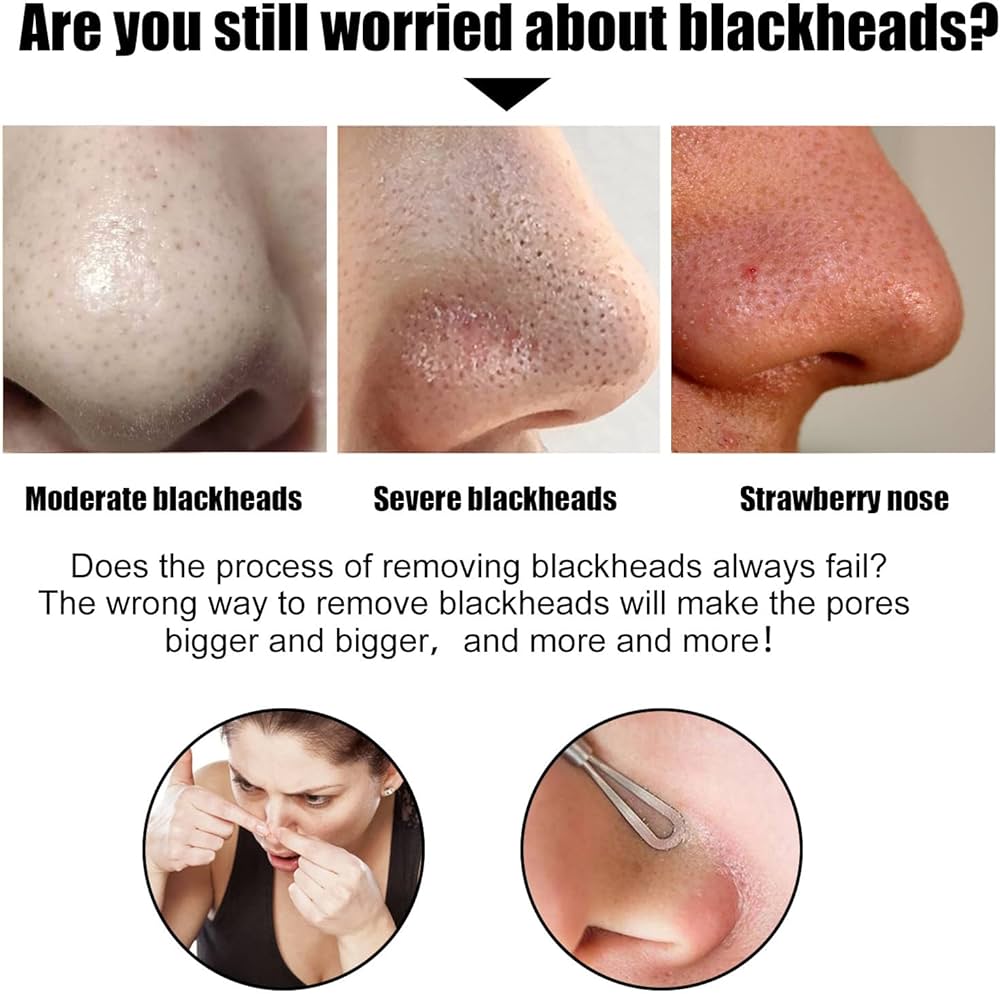Blackheads, those pesky dark spots that appear on our skin, can be a source of frustration and embarrassment. While they are a common skin concern, understanding how to effectively remove them is crucial for achieving clear and healthy skin. In this comprehensive guide, we’ll explore the causes of blackheads, various removal techniques, and the importance of maintaining a proper skincare routine.
I. Introduction
A. Definition of blackheads
Blackheads, scientifically known as open comedones, are pores clogged with excess oil, dead skin cells, and other impurities. The oxidation of this mixture gives blackheads their characteristic dark color.
B. Importance of blackhead removal
Beyond aesthetic concerns, removing blackheads is essential for preventing acne and maintaining overall skin health. Neglecting blackheads can lead to more severe skin issues, such as inflammation and infection.
C. Common misconceptions about blackheads
Dispelling myths surrounding blackhead removal is vital for adopting effective and safe practices. Let’s debunk some common misconceptions that often lead to misguided skincare routines.
II. Causes of Blackheads
A. Excessive sebum production
Overactive sebaceous glands can contribute to the accumulation of oil on the skin’s surface, leading to blackhead formation.
B. Dead skin cells
The shedding of skin cells is a natural process, but when excess dead cells mix with sebum, they can clog pores and create blackheads.
C. Use of comedogenic products
Certain skincare and cosmetic products contain ingredients that can clog pores, exacerbating blackhead formation. Choosing non-comedogenic products is crucial in preventing their occurrence.
III. Different Types of Blackheads
A. Open comedones
Blackheads with open pores are easily identifiable due to their dark surface. These are the most common type and often appear on the nose and cheeks.
B. Closed comedones
Also known as whiteheads, these are similar to blackheads but have a closed surface. They are less exposed and appear as small, flesh-colored bumps.
C. Inflammatory blackheads
When bacteria invade blackheads, inflammation can occur, leading to redness and tenderness. Proper removal and skincare can prevent this progression.
IV. DIY Blackhead Removal Techniques
A. Steam and exfoliation
Opening pores with steam and using gentle exfoliants help remove dead skin cells, making it easier to extract blackheads.
B. Charcoal masks
Activated charcoal binds to impurities, making it an effective ingredient in masks designed to pull out blackheads.
C. Baking soda scrub
A mild baking soda scrub can help exfoliate the skin, reducing the appearance of blackheads. However, it should be used sparingly to avoid irritation.
V. Professional Blackhead Removal Treatments
A. Extractions by dermatologists
Dermatologists can safely perform extractions, using specialized tools to remove blackheads without causing damage to the skin.
B. Chemical peels
Chemical peels exfoliate the skin’s top layer, promoting cell turnover and reducing the occurrence of blackheads.
C. Microdermabrasion
This non-invasive procedure involves exfoliating the skin with a diamond-tipped wand, effectively removing blackheads and improving skin texture.
VI. Prevention Tips
A. Proper skincare routine
Adopting a consistent skincare routine with cleansers, toners, and moisturizers tailored to your skin type is essential for preventing blackheads.
B. Non-comedogenic products
Choosing products labeled as non-comedogenic ensures they won’t clog pores, reducing the risk of blackhead formation.
C. Regular exfoliation
Incorporating exfoliation into your skincare routine helps remove dead skin cells, preventing them from mixing with sebum and causing blackheads.
VII. Debunking Myths About Blackhead Removal
A. Toothpaste myth
Contrary to popular belief, applying toothpaste on blackheads can irritate the skin and worsen the condition. Stick to proven skincare methods for effective removal.
B. Pore strips myth
While pore strips may provide temporary relief, they can be harsh on the skin and may not address the root causes of blackheads.
C. Sun exposure myth
Sun exposure doesn’t eliminate blackheads; in fact, it can worsen skin damage. Always use sunscreen to protect your skin.
VIII. Importance of Gentle Blackhead Removal
A. Avoiding scarring
Aggressive blackhead removal methods can lead to scarring. Gentle techniques, both DIY and professional, are crucial to prevent lasting skin damage.
B. Preventing skin irritation
Excessive force during blackhead removal can irritate the skin, causing redness and inflammation. Patience and a gentle touch yield better results.
C. Long-term benefits
Consistent, gentle blackhead removal contributes to long-term skin health, preventing future breakouts and promoting a clear complexion.
IX. Lifestyle Changes for Blackhead-Free Skin
A. Hydration
Adequate water intake helps maintain skin elasticity, preventing excessive oil production that can lead to blackheads.
B. Balanced diet
A diet rich in fruits, vegetables, and antioxidants supports overall skin health, reducing the likelihood of blackhead formation.
C. Stress management
Stress hormones can contribute to sebum production. Practicing stress-reducing activities like meditation and exercise can benefit your skin.
X. Skincare Products for Blackhead Prevention
A. Salicylic acid cleansers
Salicylic acid helps unclog pores, making it an effective ingredient in cleansers for preventing blackheads.
B. Retinoid creams
Retinoids promote cell turnover, preventing the buildup of dead skin cells that contribute to blackheads.
C. Non-comedogenic moisturizers
Using a lightweight, non-comedogenic moisturizer helps keep the skin hydrated without clogging pores.
XI. Blackhead Removal for Different Skin Types
A. Oily skin
Those with oily skin may need to exfoliate more frequently and use oil-free products to prevent blackheads.
B. Dry skin
Gentle exfoliation and hydration are crucial for individuals with dry skin to prevent blackhead formation.
C. Combination skin
Adapting a skincare routine that addresses both oily and dry areas is key to preventing blackheads on combination skin.
XII. Addressing Blackheads in Specific Areas
A. Blackheads on the nose
Nasal blackheads are common. Regular cleansing and targeted











